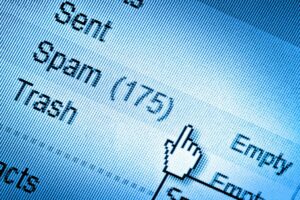Phone no: 9779851180527 or email us: info@silvercrown.com.np
Phone no: 9779851180527 or email us: info@silvercrown.com.np
In some cases, maintainability involves a system of continuous improvement – learning from the past to improve the ability to maintain systems, or improve the reliability of systems based on maintenance experience. Purchasing assets that are easy to maintain is an important what is maintainability factor to consider during the procurement process. This wastage of time and resources can be easily avoided by incorporating design features that limit the influence of human factors, make the issue obvious, and consequently simplify the necessary corrective maintenance.

This is where a maintenance app for tracking downtime comes in handy. If your organization is lacking in this area, creating a standardized operating procedure or even just a central repository for maintenance documentation can go a long way to helping technicians and mechanics carry out their work more efficiently. And, of course, planned downtime when an asset is scheduled to be unavailable. Maintainability is the speed and ease with which the asset can be put back into service when it experiences a failure. This article includes a list of references, related reading, or external links, but its sources remain unclear because it lacks inline citations. Simplify the execution of maintenance work and indirectly improve the maintainability of their facility.
In absence of such a monitoring system, a costly and time-consuming hit-and-trial strategy shall be adopted – decreasing the maintainability of the asset in the process. For example, most electronic home appliances show an error code for commonly occurring issues and/or failure modes. In power industries, turbine rotors are designed such that turbine blades get assembled over turbine wheels, which in turn are fitted onto the rotor shaft. This allows easy replacement of damaged blades and, at times, upgrading of turbine rotor by installing more efficient blade designs. In general, RAM studies are used as a tool for assessing a production system’s capabilities.

Using commonly available generic components rather than custom-fit parts enables the end-user to use alternate spares from the market if original spares are not available or have longer lead times. In essence, it is an easily achievable optimization of maintenance activities. Availability represents the percentage of uptime over a specific time period. Since it considers system running time and downtime, both MTBF and MTTR are a part of its calculation. As was the case with maintainability, availability may be qualified as to whether it includes only unplanned failures and repairs or downtime due to all causes including administrative delays, staffing outages, or spares inventory deficiencies .
This approach offers the best portability and maintainability at the cost of reduced performance. Mapping the simulated digital network to a high-level programming language such as C enhances performance and is portable to any target machine that has a C compiler. The compilation time could be a severe limitation for fault simulators that require recompilation for each faulty circuit. The native machine code approach generates the native machine code directly without the need of compilation; this makes it a more viable solution to fault simulation.
This avoids the “broken windows effect” in which other developers temporarily relax their discipline and take shortcuts. Setting the right example is not necessarily about being the most skilled engineer, but more about retaining discipline during development. But, when they do, ensuring good equipment is the only way to avoid unnecessary downtime. Another way to save time in repairs is to purchase similar equipment, as airlines do.
Bearings are manufactured to standard sizes by most of the popular bearing manufacturers. If an SKF bearing is damaged and a replacement is not available locally, it is usually possible to look for a similar bearing from FAG catalogue and use that one instead. More cost-effective to replace the sub-assembly rather than repair the damaged part.

The same continuous distributions used for reliability can also be used for maintainability although the interpretation is different (i.e., probability that a failed component is restored to service prior to time t). However, predictions of maintainability may have to account for processes such as administrative delays, travel time, sparing, and staffing and can therefore be extremely complex. Reliability, availability, and maintainability are three system attributes that are of tremendous interest to systems engineers, logisticians, and users. Collectively, they affect economic life-cycle costs of a system and its utility. For consistency, we are using Java code snippets throughout the book. However, the guidelines described in this book are not specific to Java.
Read next, the top 5 maintenance metrics you should always have in mind. The calculation of the MTBM allows the Maintenance Engineering to carry out an analysis regarding the design of the machinery, precisely considering the scheduled downtimes and therefore the possibility of reducing them. To calculate it we simply need to take the actual repair time of the asset and divide it by the number of failures that the asset has reported. In order to measure the maintainability of assets, systems, or machines, you must be able to quantify the efforts of implementation and maintenance. Maintainability or “maintenance according to design” is the requirement of the maintenance technical personnel team directly from the design stage to promote its tasks. Availability generally means the fraction of time that the system is operational, and the instantaneous availability is defined as the probability that the system is operational at a specific time, which can be formulated as follows.
It is an especially important concept in industrial maintenance, but exists in other areas. In the case of software, for instance, we would be referring to the simplicity with which software is fixed after a bug is detected, or the speed with which it is changed to meet new requirements and realities . In order to collect and analyze data and monitor maintenance metrics, it is, therefore, necessary to have a tool capable of returning reliable analyzes and facilitating the work of maintenance personnel. However, these studies, even if carried out from the early design stages, led to results that were far from the specific purposes of maintenance, providing only qualitative indications. The longer duration of the interventions is reflected in the maintenance plan, leading to an increase and lengthening of the workload.
At other times, the only solution is to use a hack that creates more problems than it solves. Mmax, which is the maximum time established to complete a certain percentage of all the https://www.globalcloudteam.com/ repairs (e.g. 90% of the repairs should be performed within one hour). You should use real data from your maintenance management software to estimate realistic maximum repair times.
There are more sophisticated probability models used for life data analysis. Reliability is defined as the probability of a product performing its intended function under stated conditions without failure for a given period of time. A precise definition must include a detailed description of the function, the environment, the time scale, and what constitutes a failure. When discussing reliability at a plant, reliability is defined as “The probability of a product performing its intended function under stated conditions without failure for a given period of time.” . According to the ISO definitions, a system can be highly maintainable and still be lacking in other quality characteristics.
Engineers provide inputs to the design engineers to identify and integrate specified maintainability requirements. The design criteria constitute specific maintainability goals, such as modularization, standardization, accessibility, interchangeability, repair versus discard guidance, quantity and placement of test points, and degree of self-test features. These criteria are stated qualitatively or quantitatively and are used as guidelines by the design engineer.